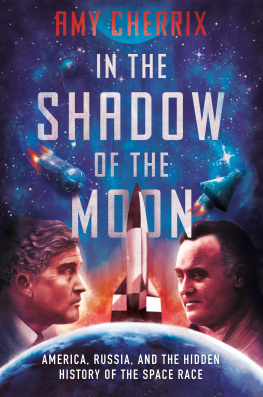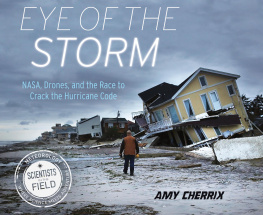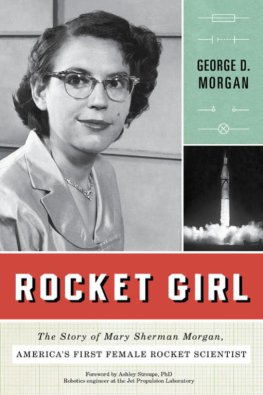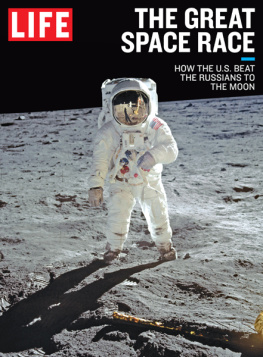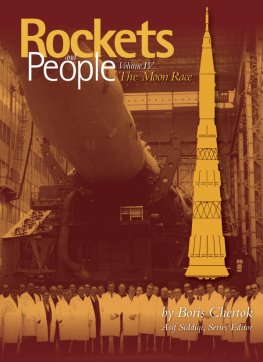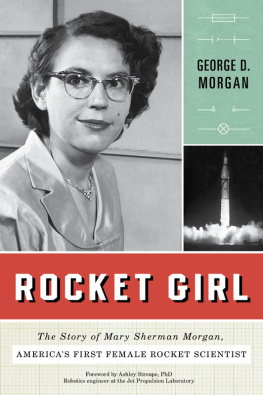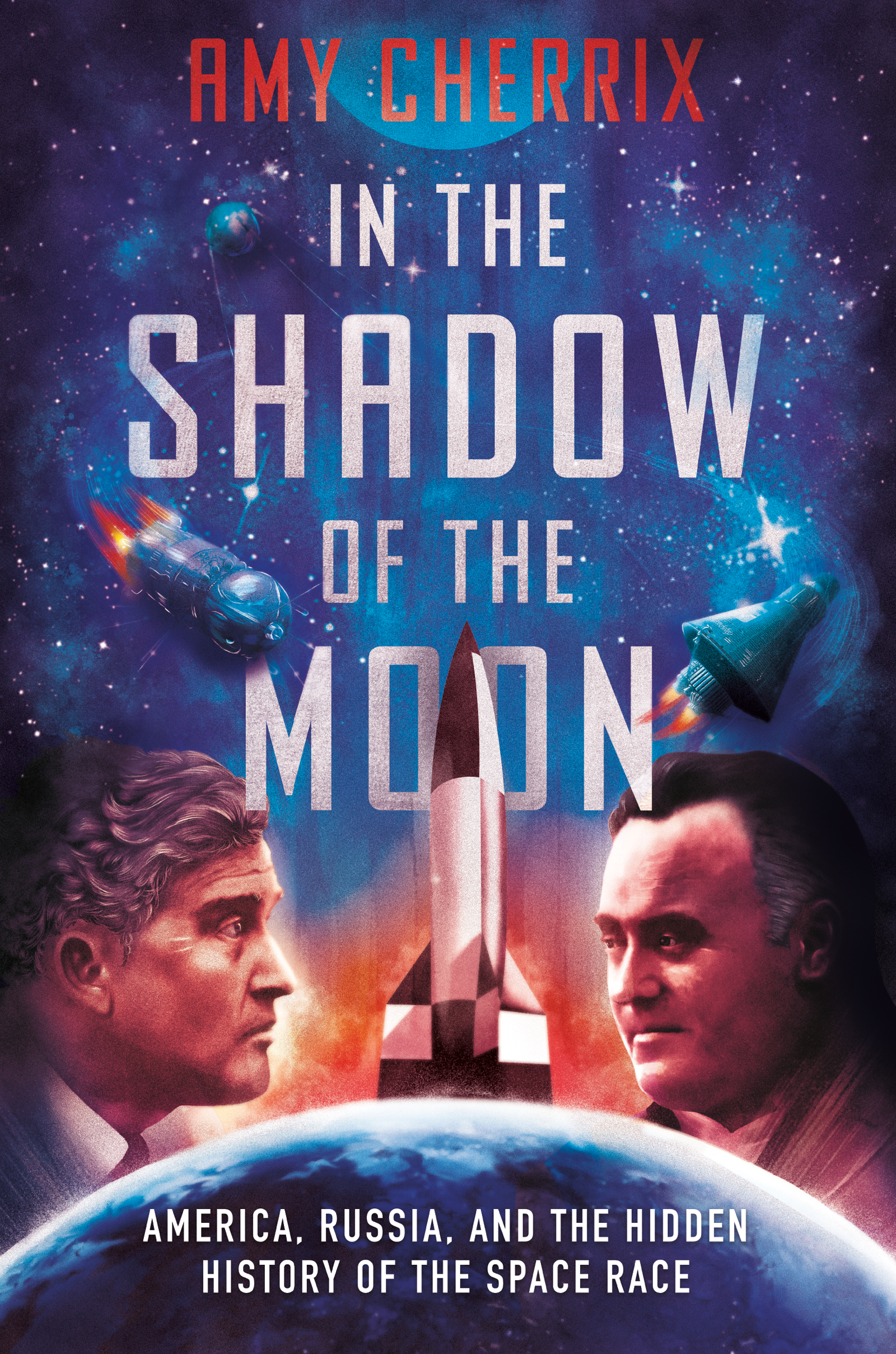must stand vigilant against its resurgences.
For every action, there is an equal and opposite reaction.
Newtons Third Law of Motion
It is the very error of the moon.
She comes more nearer earth than she was wont
And makes men mad.
William Shakespeare, Othello: Act 5, Scene 2

Contents

If youve picked up this book, chances are youve heard of the space race. Maybe you were intrigued by the words hidden history on the cover. Or maybe youve already learned about it in history textbooks and think its old news.
I thought I knew the story, too. But what the textbooks never told me was that the greatest, most visible race humankind has ever undertaken was won in the shadows by a former Nazi and a Russian who was jailed for crimes against his country. The story begins at the end of World War II with these two brilliant but controversial men. Wernher von Braun was a German Nazi officer, engineer, and eventual immigrant to the United States who came to America (under questionable circumstances, as you will see) to teach the US Army how to build rockets. Sergei Korolev was a celebrated Russian engineer in his own right, who was once imprisoned as a traitor to his country. By 1957, Korolev and von Braun were on opposite sides of the space race. This world-changing contest would bring stunning victories and tragic losses to both sides as Korolev and von Braun fought to be the first to reach the moon. They were strangers who never met, but their rivalry would alter the contours of science, politics, warfare, and space travel. However, despite their importance to one of the most astounding achievements in human history, crucial details of their lives and work were deliberately hidden from the public for decades.
So what does any of this have to do with you? The space race is over. The United States won when Apollo 11 landed on the moon in July 1969. Surely thats the end of the story, right? In a way, its just the beginning, because von Brauns and Korolevs influence is all around us today. The rockets they perfected as spaceships were also intercontinental ballistic missiles (ICBMs)weapons of mass destruction that can carry nuclear warheads thousands of miles and threaten every life on this planet, including yours.
The tensions at the heart of the space race between the United States and Russia (then known as the Soviet Union) reverberate in the twenty-first century. As I write this book, media headlines from around the world read like a spy thriller. Russia hacked Americas presidential election in 2016 in an attempt to undermine democracy. The American president has been accused of colluding with the Russians to win that election illegally. All the while, 250 miles above Earth, aboard the International Space Station (ISS), American astronauts and Russian cosmonauts routinely cooperate in the name of science. Cooperation between the two countries expanded when the US ended its space shuttle program in 2011. For nine years, the US paid the Russians to carry American astronauts to the ISS aboard their Soyuz rocket, a vehicle originally developed under Sergei Korolevs leadership in the 1960s. Americas triumphant return to crewed spaceflight from US soil came in May 2020, when the SpaceX Falcon 9 rocket and its Crew Dragon spacecraft launched NASA astronauts Douglas Hurley and Robert Behnken safely to the ISS.
Against this backdrop, the United States has set its sights on a return to the moon and a crewed landing on the surface of Mars by the 2030s. As humankind prepares to take the next giant leap deeper into the cosmos, now is the perfect moment to look back at the once-hidden history of the space race for clues about how to face the future. A new countdown is about to begin. This time, youll be there to witness it. How will you record its history?

W hen the Polish lab technician plunged his hand into the toilet bowl of a University of Bonn bathroom to retrieve a bundle of half-flushed papers, he couldnt have known he held a clue to one of Hitlers darkest secrets.
It was late March 1945. Adolf Hitlers reign of terror was finally drawing to a close, and British intelligence officers had received an important lead on Nazi activity in Bonn, Germany. Communication reports suggested that the University of Bonns faculty could be burning evidence that linked them to war crimes. After the Allies overtook the university, the lab technician came forward with the mysterious papers. He told a British soldier that he had discovered them shoved into a toilet bowl, as if someone had tried to flush them. He had a hunch the documents might be important to the Allies. After all, why would someone try to flush ordinary documents down a toilet?
The lab technician was right to be suspicious. This toilet paper was part of a larger file that would come to be known as the Osenberg List, a classified roster of Hitlers most notableand notoriousscientists and engineers, some of whom had been building a lethal arsenal for the Nazis, like stockpiles of biological weapons capable of infecting and killing an entire population. Others were doctors who had conducted unspeakable experiments on concentration camp prisoners, and engineers who designed Hitlers high-tech mechanical weapons. If the Allies could locate these valuable military assets and interrogate their inventors, they could use the information to better protect their troops from Nazi attacks and learn their secrets as well. One engineer in particular was of great interest to the American army, and among the most wanted men in the world: Dr. Wernher von Braun. As the Nazis genius rocket designer, he had invented the A-4 rocket, one of the deadliest weapons in Hitlers arsenal of Wunderwaffen, or wonder weapons. The vehicle was renamed to match the terror it inspired. They called it the V-2.
The V stood for vengeance.
At almost four stories tall, this marvel of aeronautical engineering was the worlds first ballistic missile. It was loaded with explosives and launched into a vertical arc, or trajectory, its powerful engine thrusting the rocket to an altitude of fifty milesthe edge of outer spacemaking it the first man-made object to reach such an altitude. After its fuel reserves were exhausted, the rocket turned and plummeted back toward the Earth, propelled by gravity at more than five times the speed of sound, too fast to be detected or stopped.

A V-2 rocket launches from the Peenemnde Army Research Center, around 1937.
The Germans had used the V-2 missiles, each one capped with a one-ton warhead, to bombard Paris, London, and Antwerp, Belgium, since early September 1944. The constant threat of deadly V-2 attacks terrorized Western Europe. The British government ordered mass evacuations of its cities and issued millions of gas masks to civilians. People lived in a state of fear. But as deadly and destructive as the bombings were to populated cities, the V-2 had been deployed too late in the war to help Hitler defeat the Allies. Their persistent bombing campaigns from traditional aircraft were already overwhelming the Germans.

